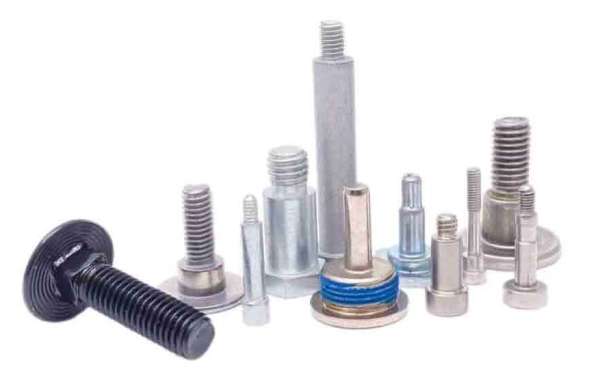A screw is a general term for a group of mechanical fasteners with a threaded shaft and a screw in configuration. This includes self-topping screws and wood screws, which have a tapered shaft and pointed threads made to sever a mating thread in the component they are secured to. It also includes machine screws, which are much more akin to bolts but typically have a threaded shaft on the entire shaft.
By their intended usage, bolts and screws can sometimes be distinguished. These definitions state that a screw mates with a threaded hole in one of the parts being fixed while a bolt travels through an unthreaded hole in a part and is held in place by a nut. This term is not strictly followed in reality. Typically, a fastener that is not self-tapping and has only a portion of its shaft threaded is referred to as a bolt. Screws are commonly used to refer to fasteners that are either self-tapping or have their entire shaft threaded.
In order to stay firmly secured, screws frequently rely on friction at the threads. The majority of this friction in the case of a self-tapping screw is brought on by the hole's radial expansion. For machine screws, the primary source of friction is the axial force produced by the torque supplied to the head, the following tension in the screw, and the compression of the component parts. A locking nut or thread-locking adhesive can also be used in place of, or in addition to, machine screws to prevent loosening.
Screws are the most typical fastener in the world, distinguished by the presence of helical threading all the way around a long shaft. Screws are frequently used to attach two or more solid things. They provide a quick and efficient way to link several solid things together.
Although all screws have helical threading around a shaft, not all screws are created equal. Here are six typical screw types.
Wood Screw
A wood screw is conceivably the most popular kind of screw. Wood screws are not actually made of wood. Instead, they are employed to join two or more things made of solid wood. Wood screws are very helpful for woodworking applications because they feature a sharp point that can pierce wood.
Mechanical Screw
As the name implies, a machine screw is a type of screw used in machining operations. There are many different types of machine screws, one type is a stove bolt. Heavy metal things are held together by machine screws. Machine screws are larger than most other screws since their diameter can reach 0.75 inches, according to Wikipedia.
Lag Screw
Lag screws are a different kind of screw that are worth mentioning, despite not being as popular as wood or machine screws. These enormous zinc-coated wood screws are also known as lag bolts or carriage bolts. Lag screws receive a zinc coating to shield them against corrosion and rust. Companies often use electroplating or hot-dip galvanization to add the zinc.
Sheet Metal Screw
Of course, sheet metal screws are made to be driven into sheet metal. They are typically used for sheet metal, yet they can also be used on other materials like wood. The threading on sheet metal screws extends all the way to the top of the shank, which makes it simple for them to penetrate sheet metal.
Twin fast Screw
Twin fast screws have a distinctive design with two threads as opposed to one. They can be pushed into items twice as quickly as conventional screws because they have twice as much threading. Twin fast screws are commonly used for drywall. Having stated that, twin fast screws can be utilized in situations other than the setting up and hanging of drywall.
Security Screw
Finally, security screws are designed to protect against removal or tampering. Unlike other screws, security screws don’t have an operable head that can be reversed to remove the screw. Rather, they generally require a specialized tool like a spanner or square driver to remove. This design makes them an excellent choice for security applications.








